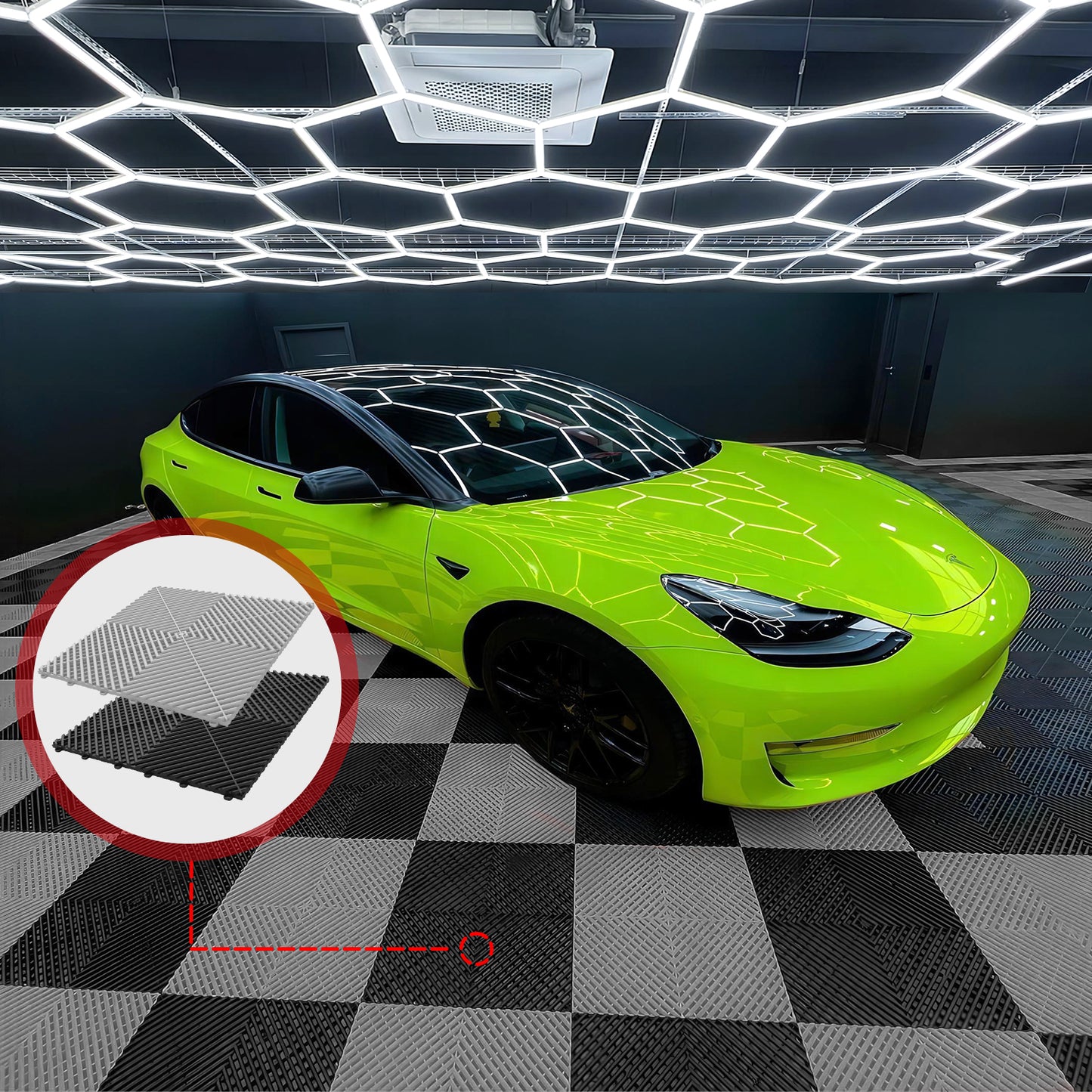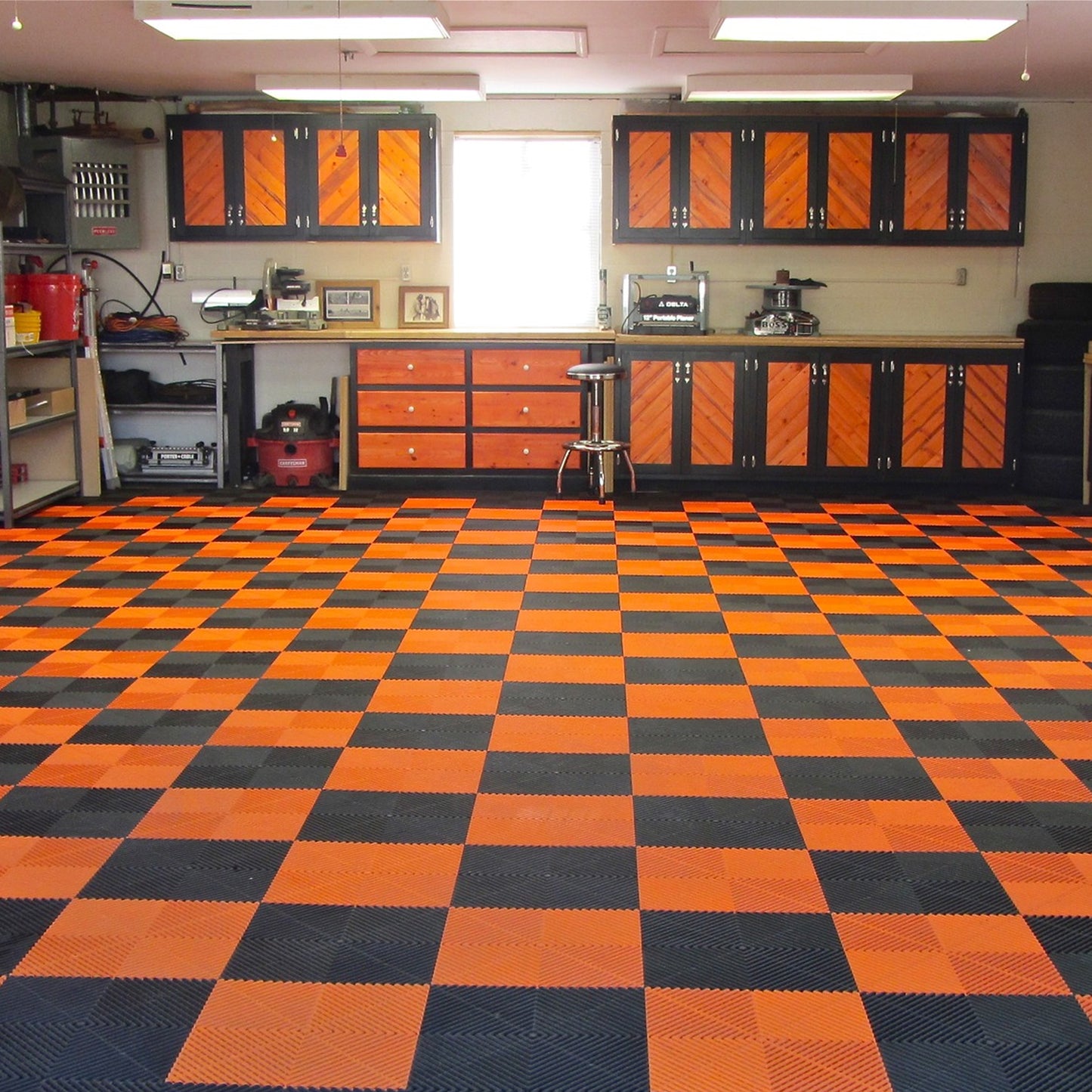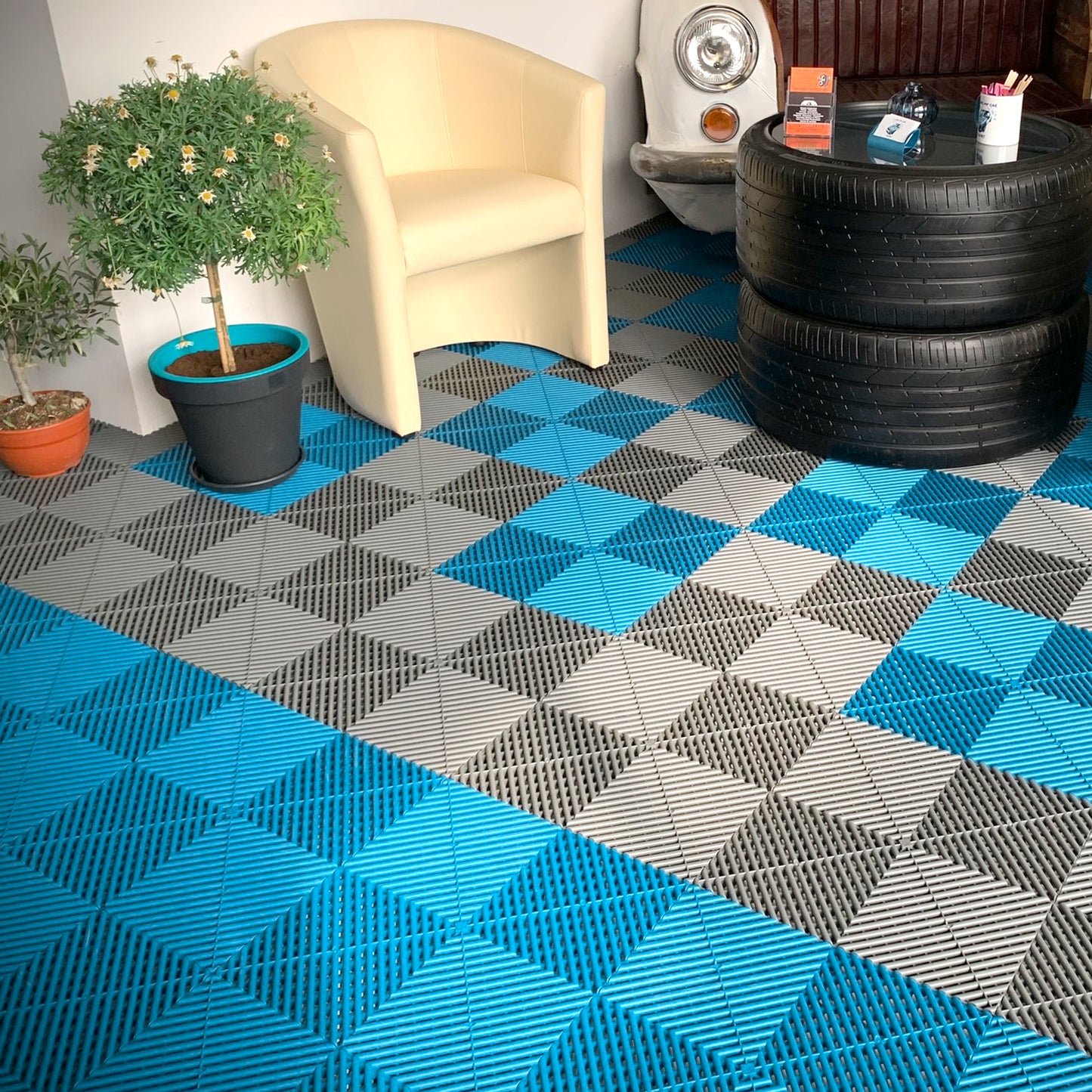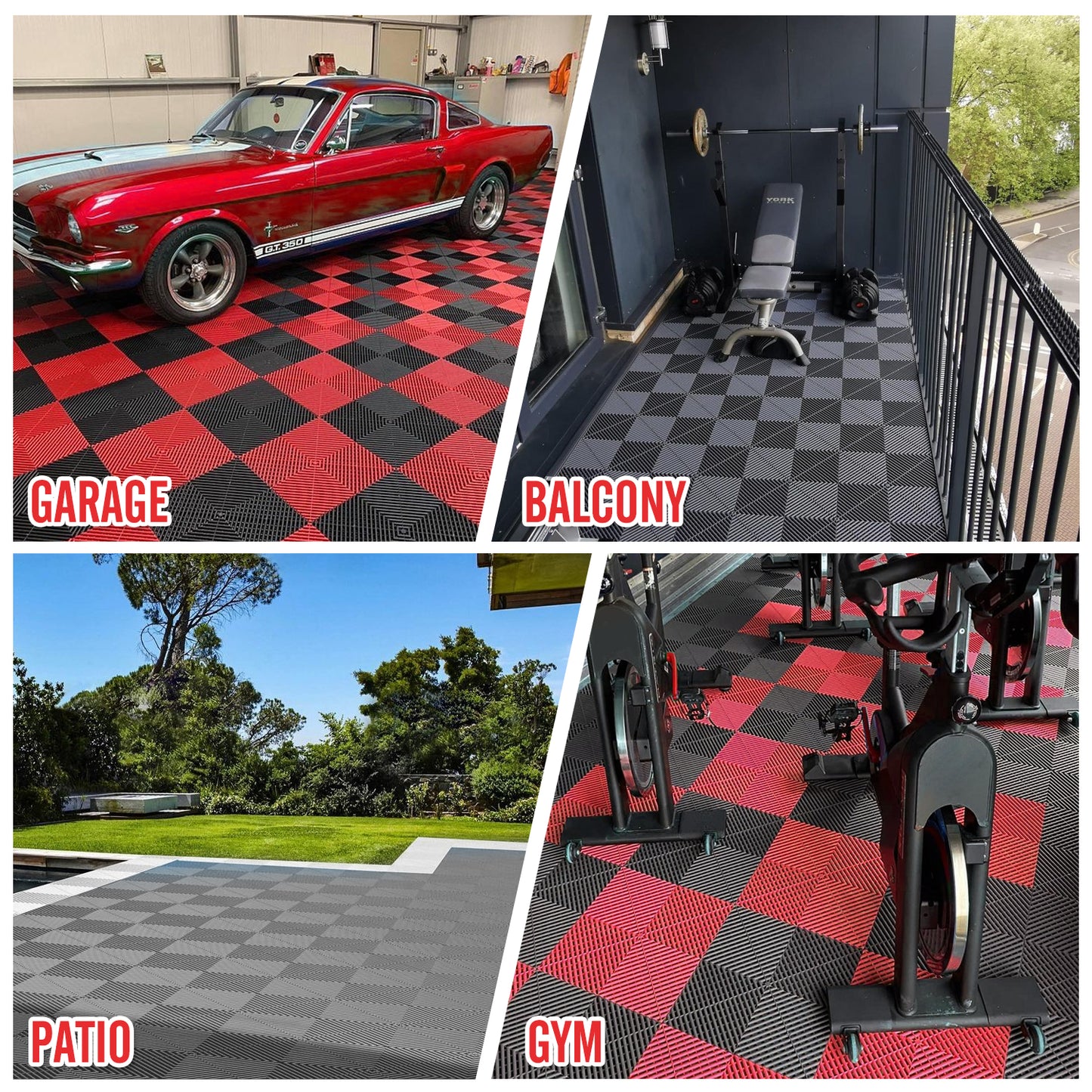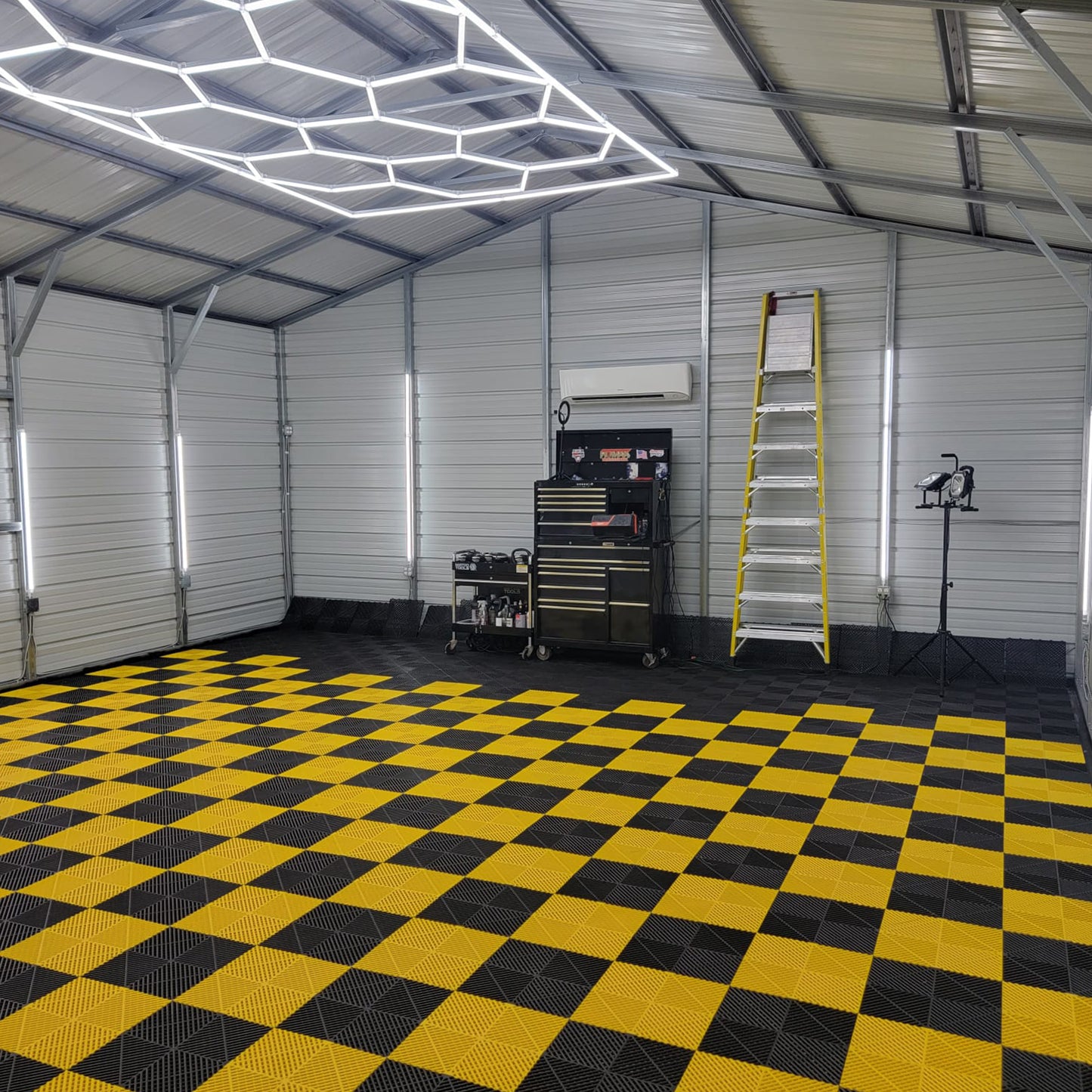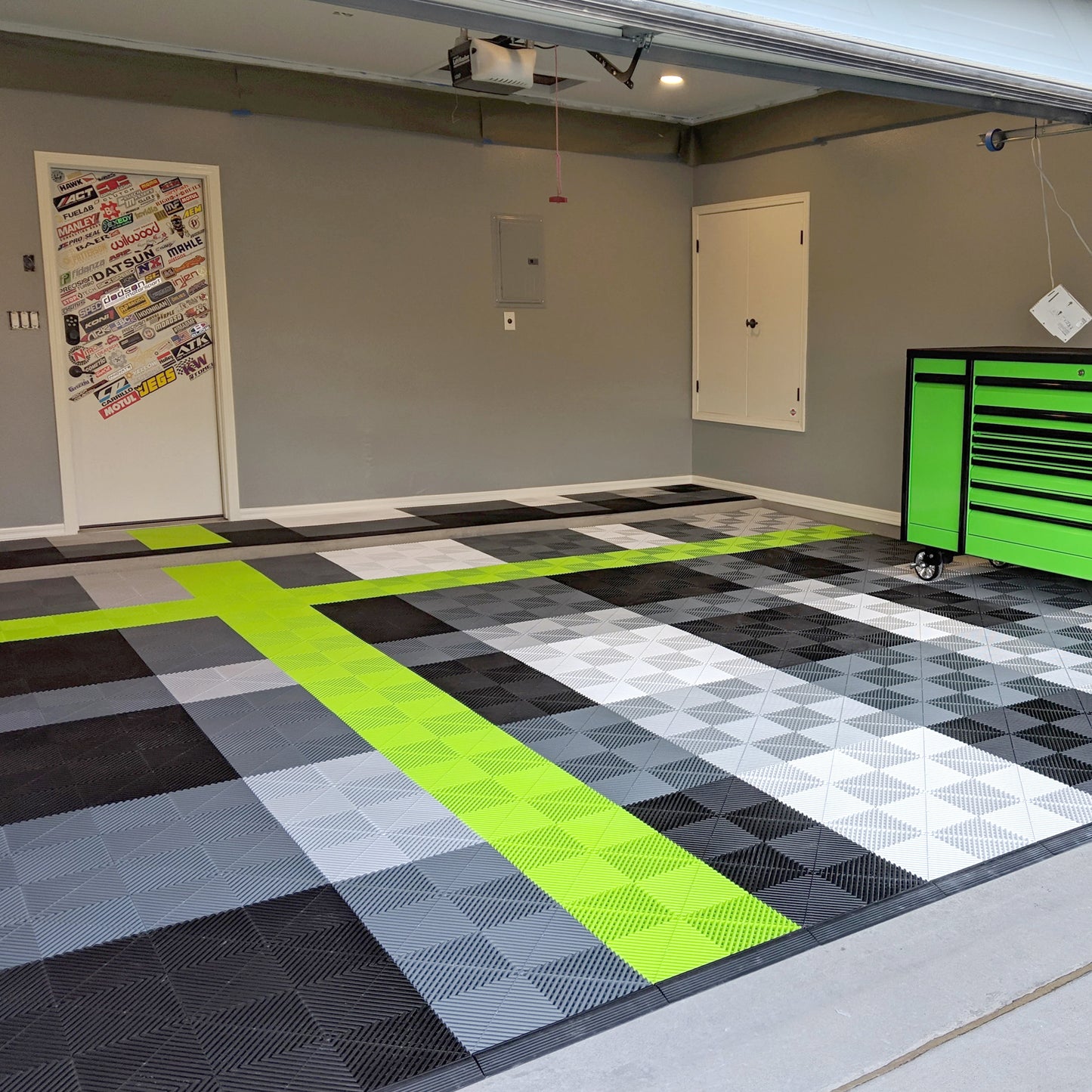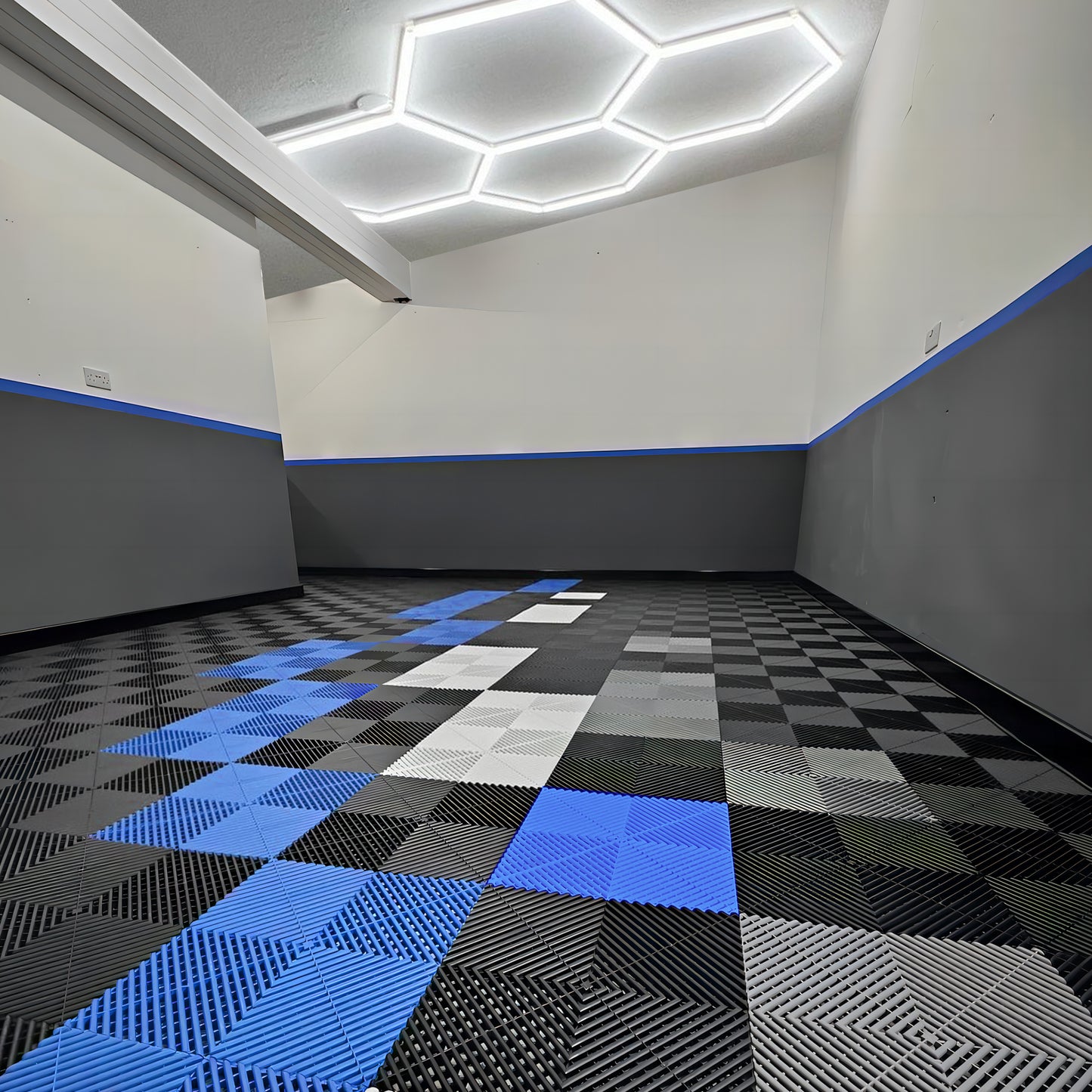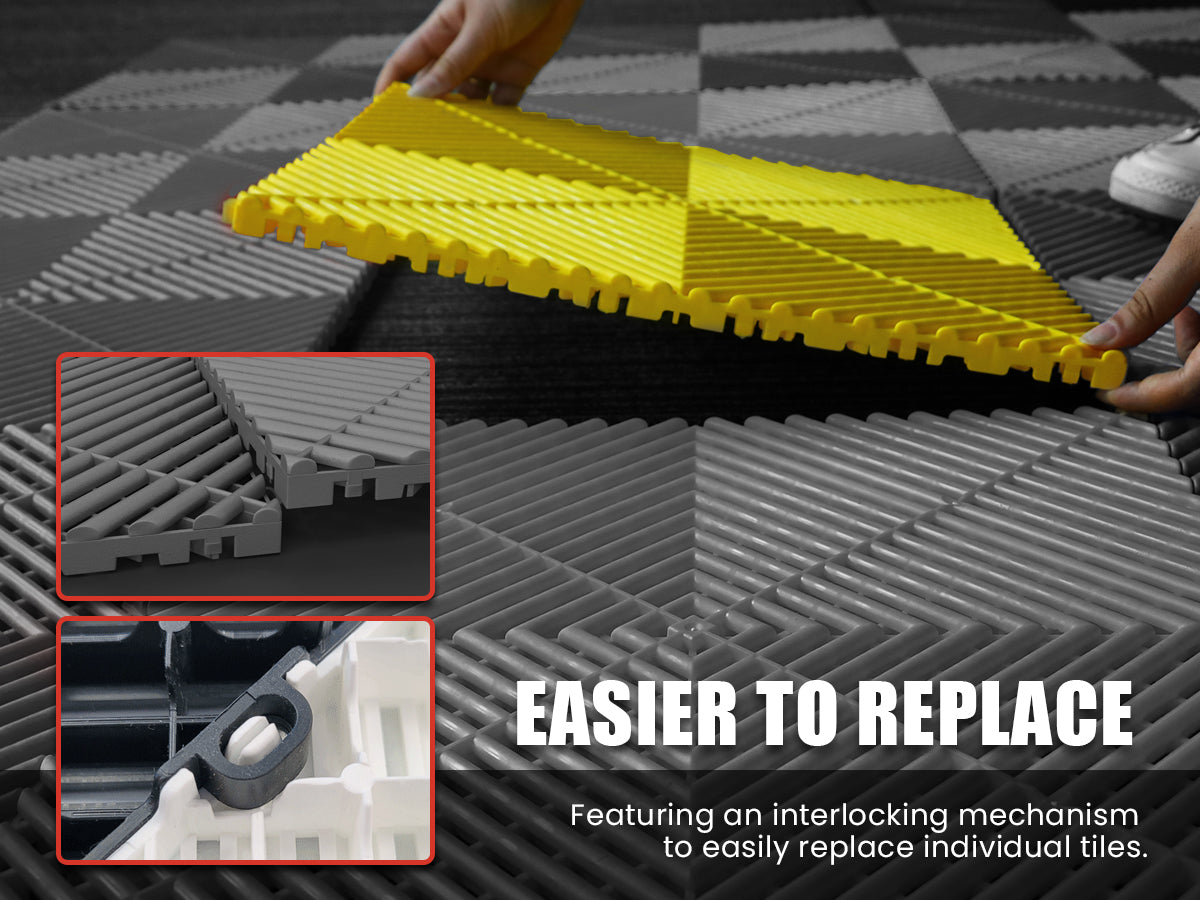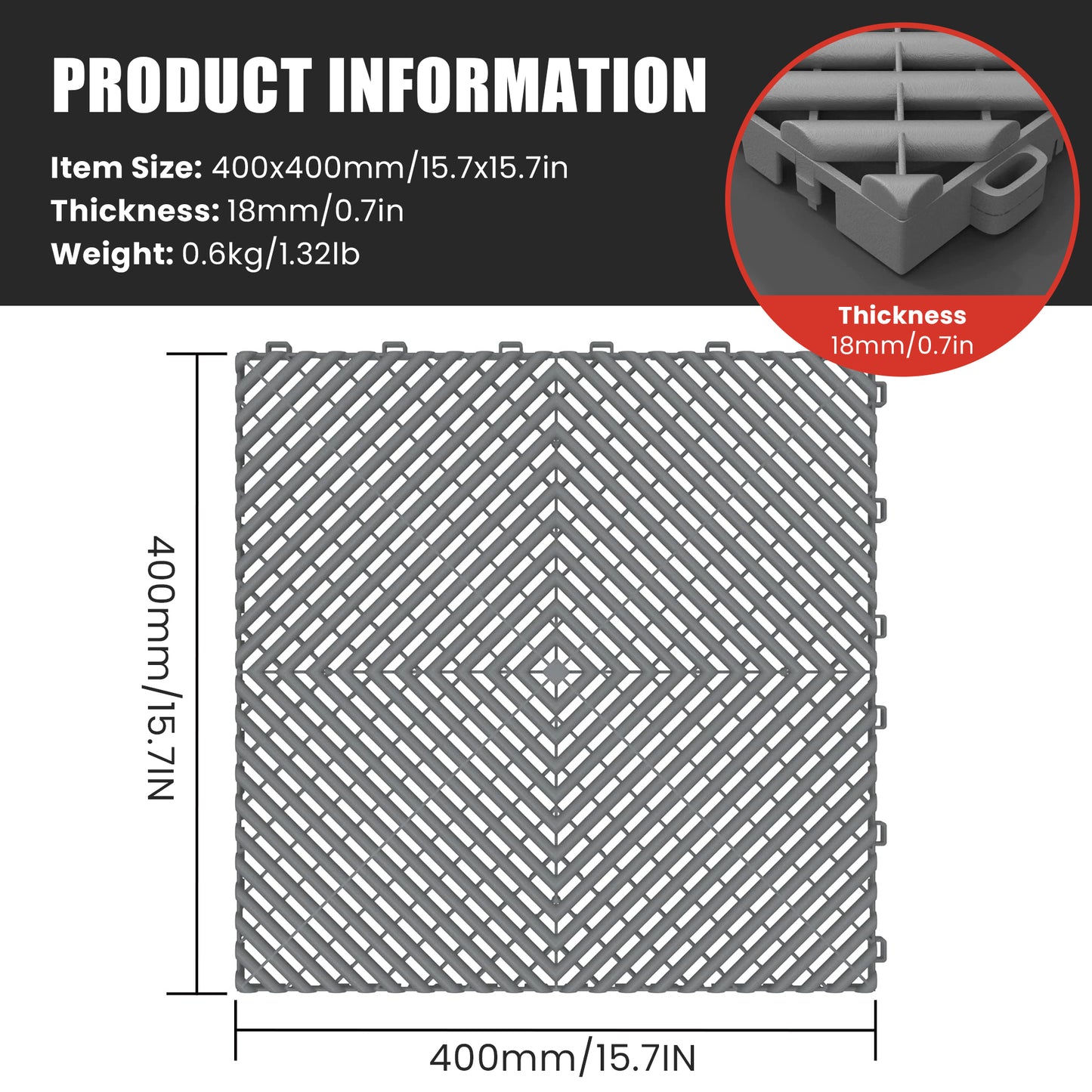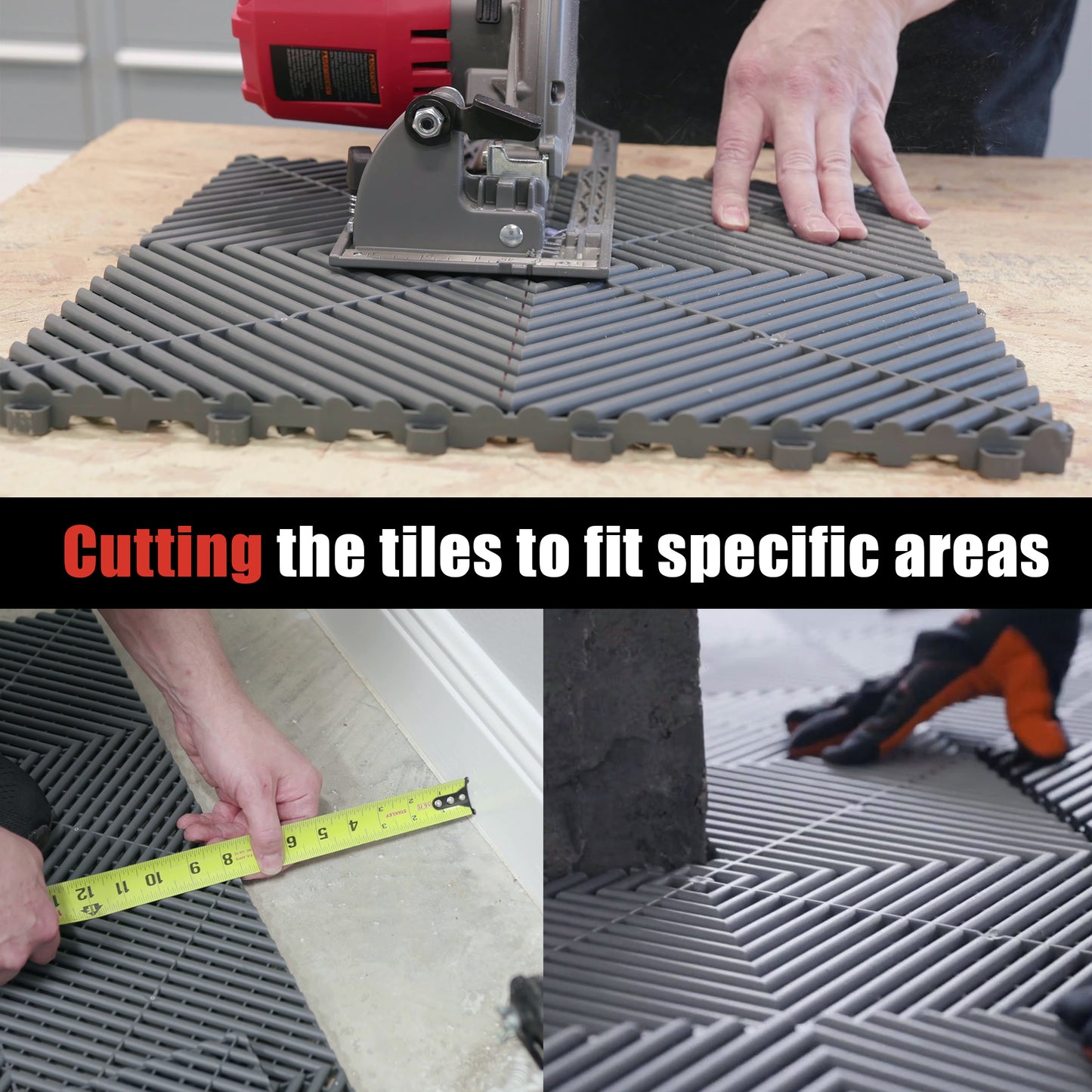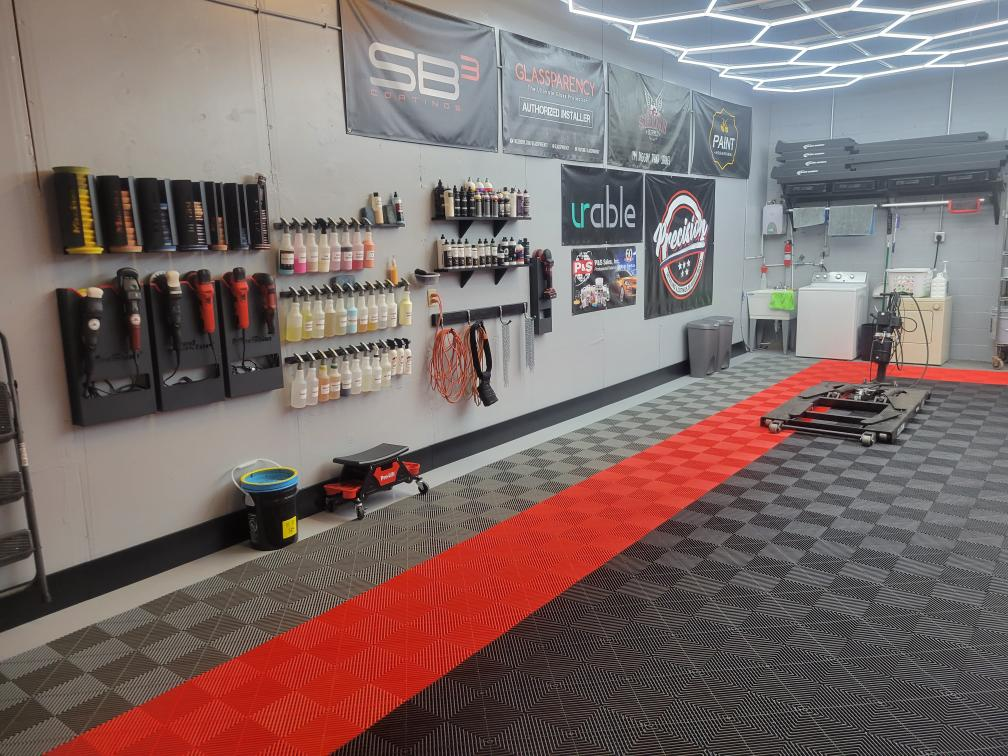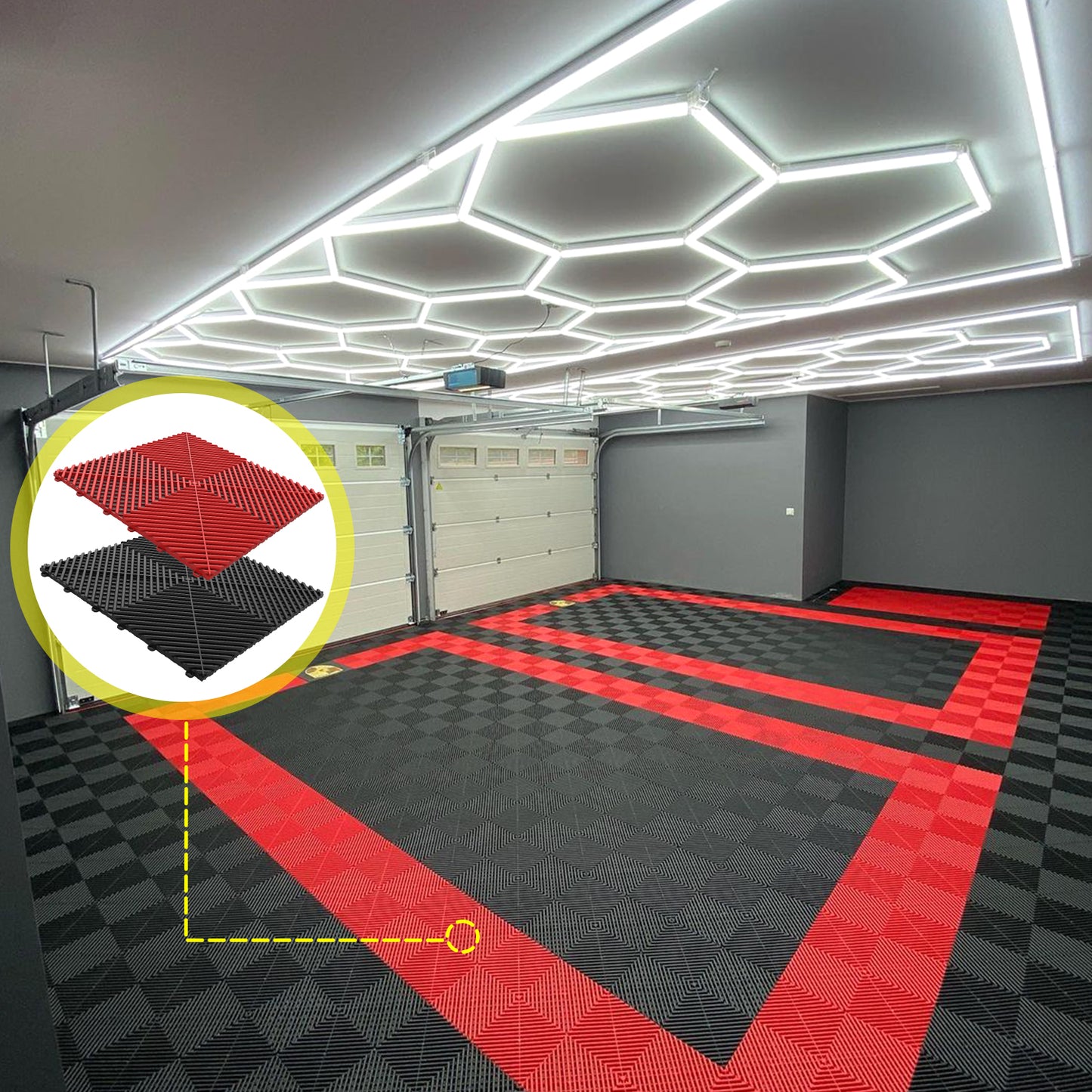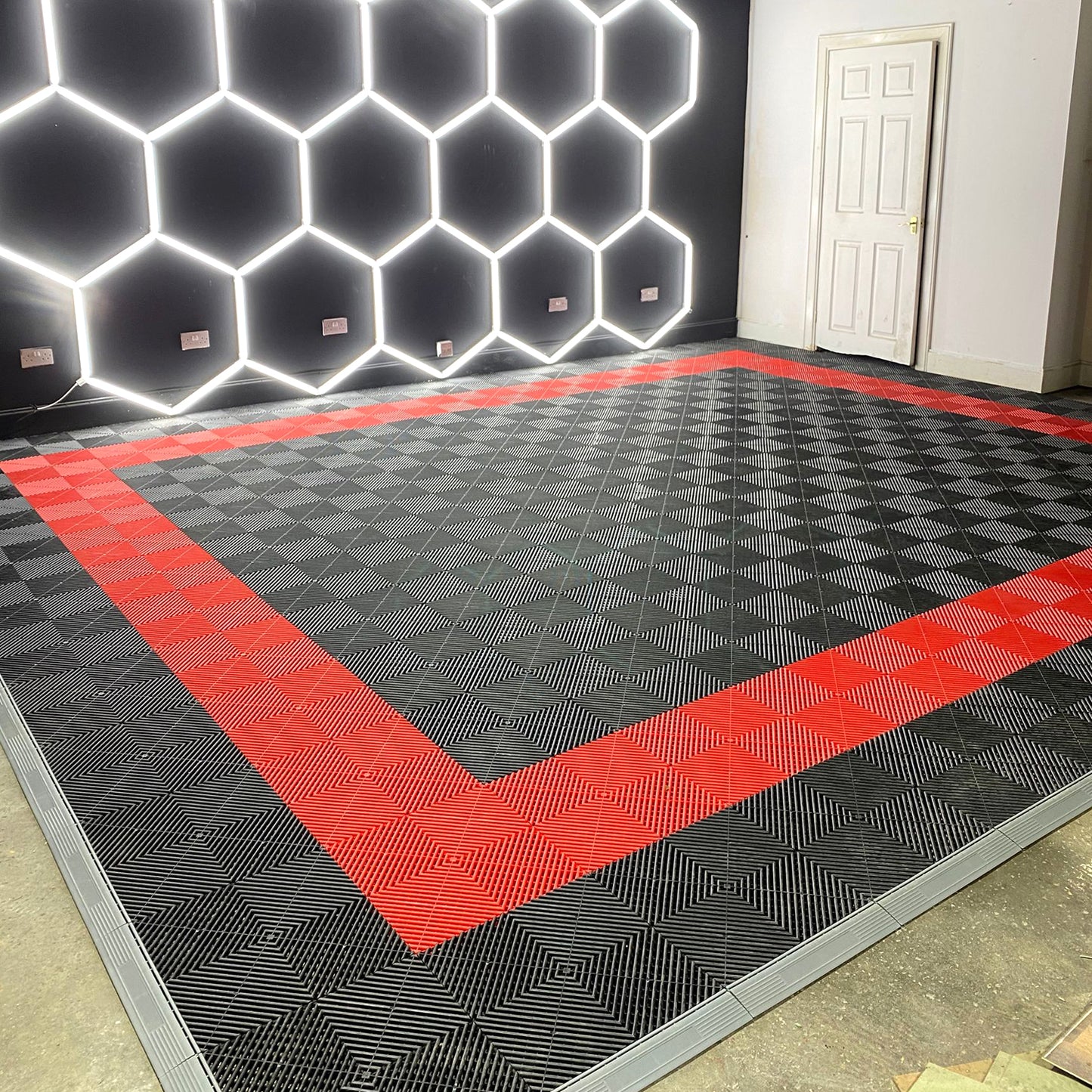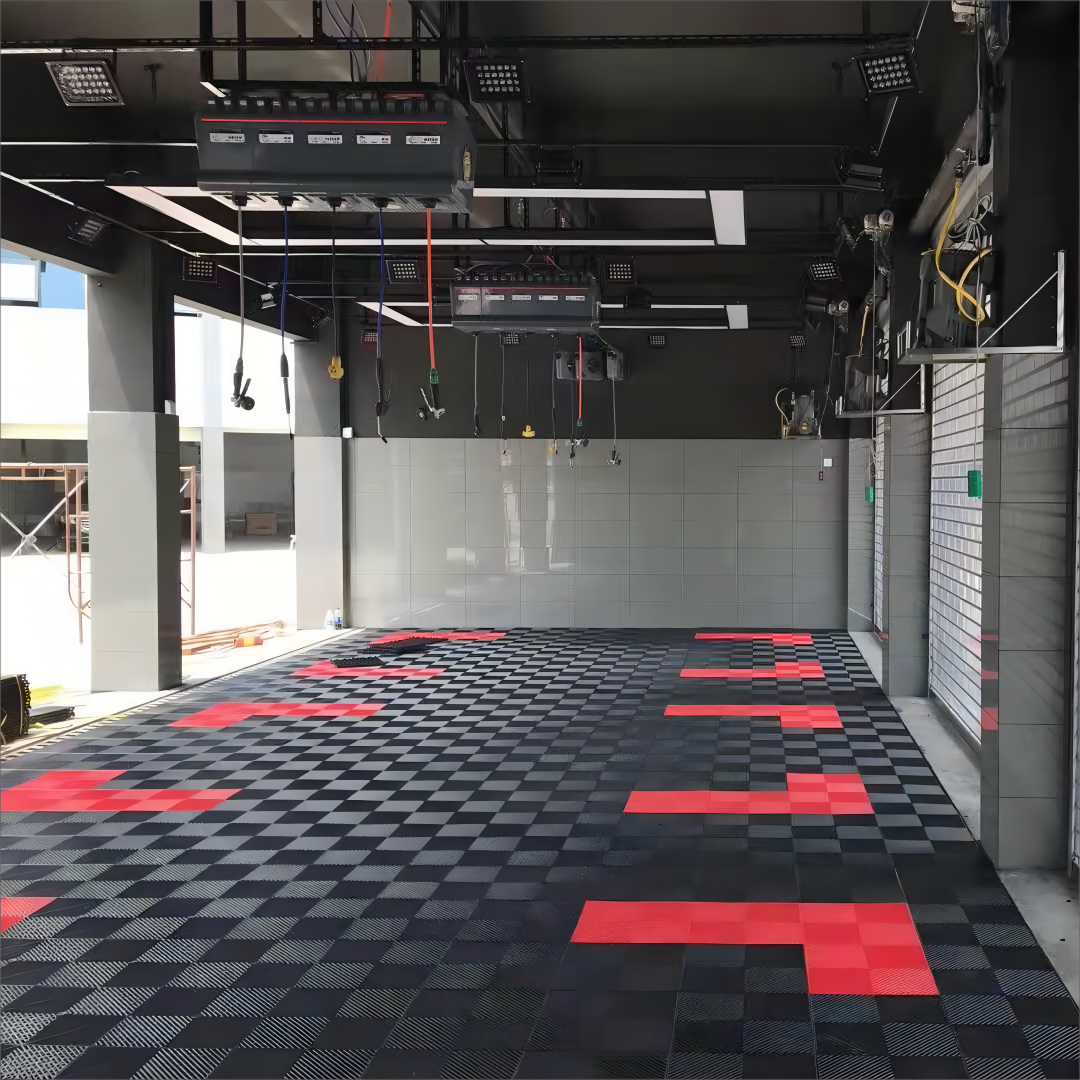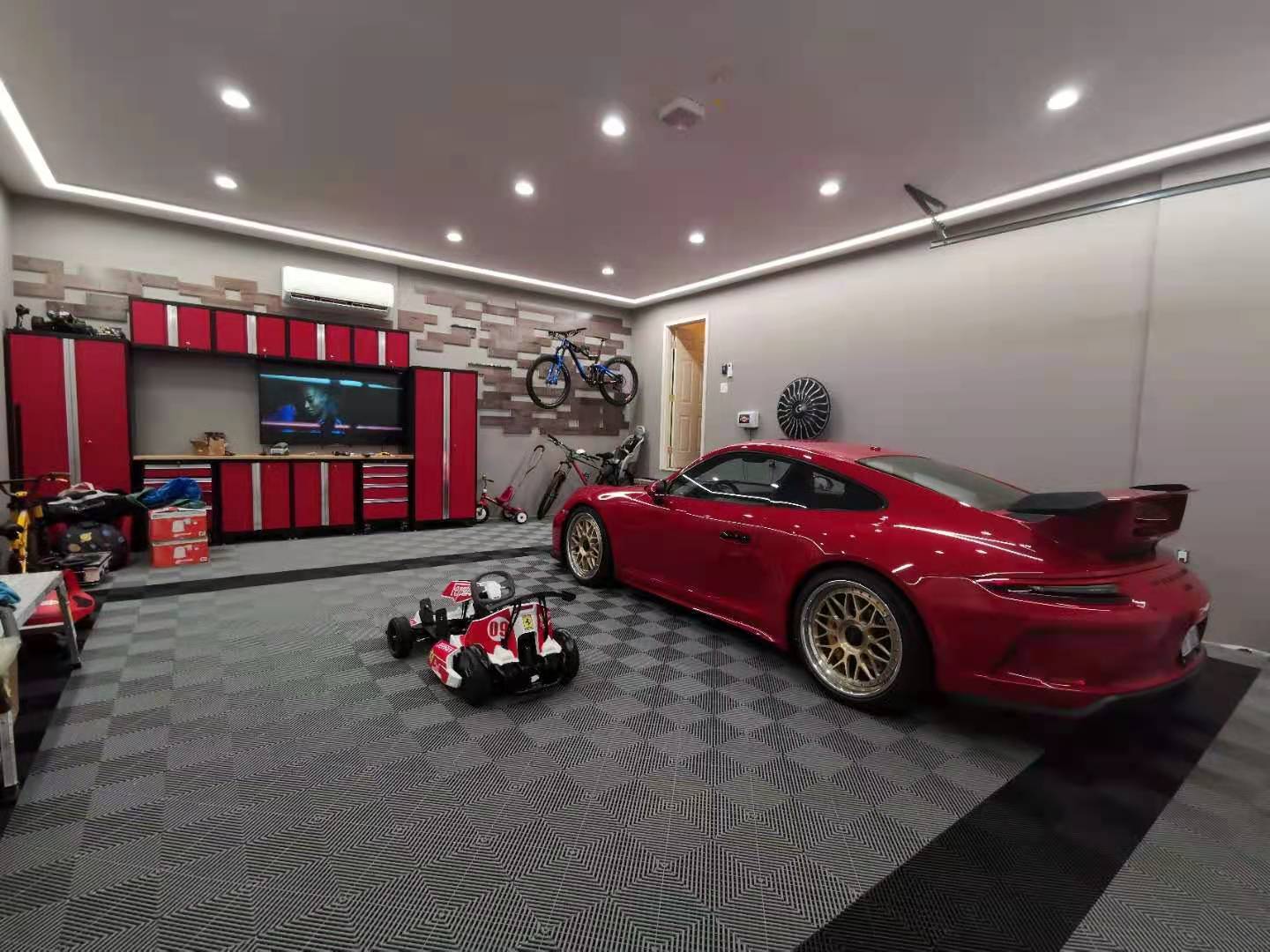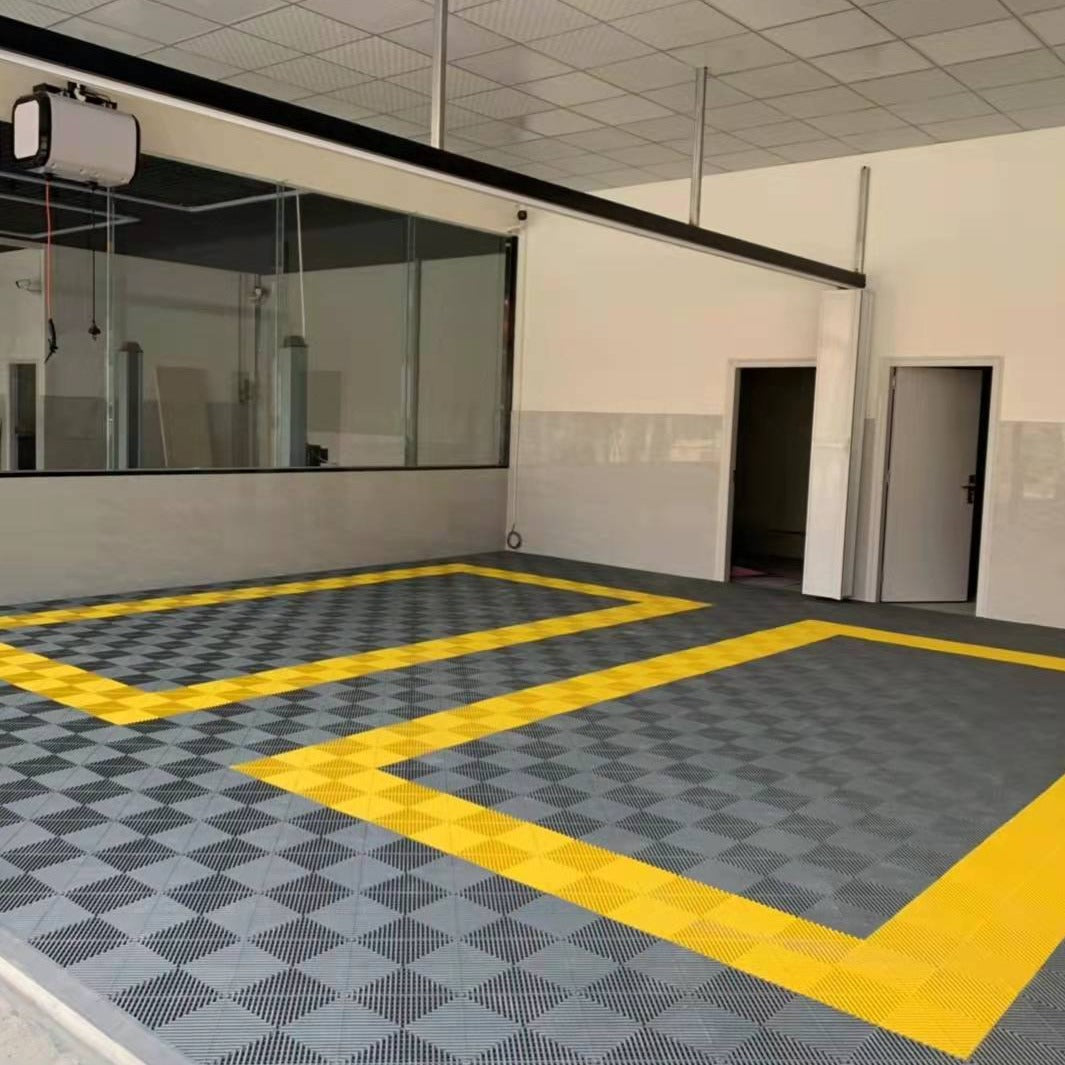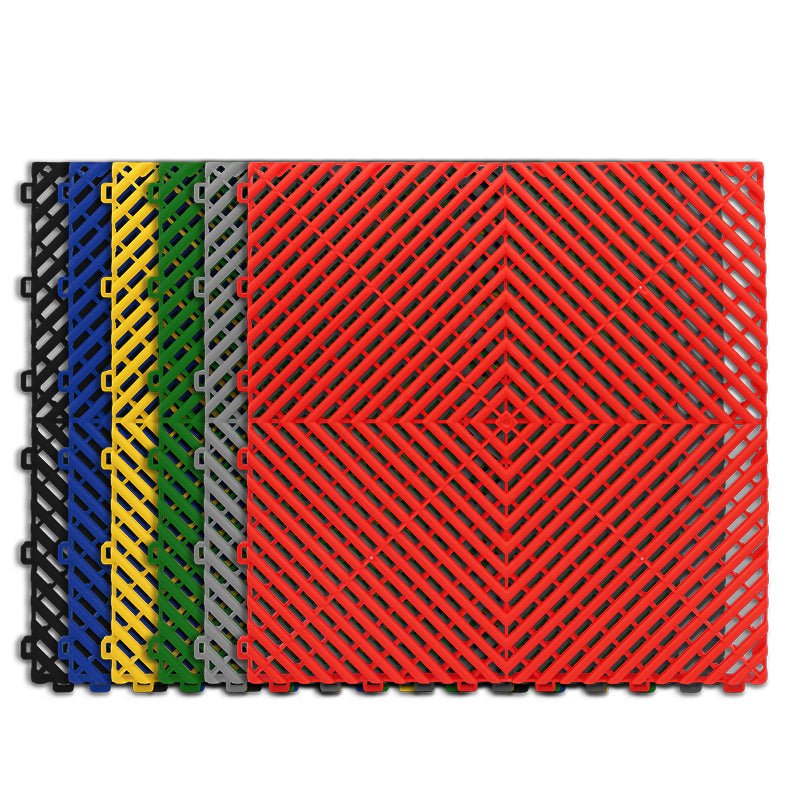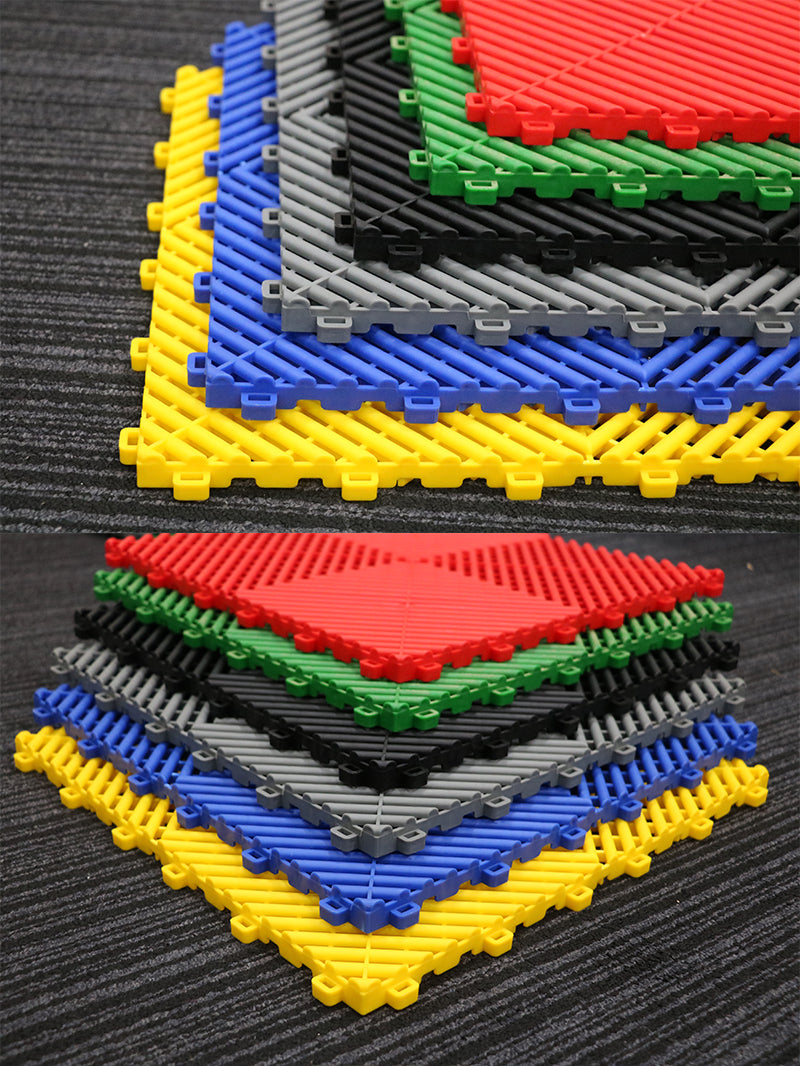✅ Tools & Materials Needed
- Rubber mallet (optional but helpful)
- Tape measure
- Utility knife or jigsaw (for trimming tiles)
- Straightedge or T-square
- Broom or shop vacuum
- Chalk line or marker (for layout)
📋 Step-by-Step Instructions
1. Clean and Prepare the Floor
- Sweep or vacuum thoroughly.
- Remove dust, dirt, oil, or loose debris.
- The floor doesn’t need to be perfectly smooth, but fix any major holes or sharp bumps.
💡 Optional: If your garage is damp, consider laying a moisture barrier (plastic sheeting or underlayment).
2. Plan Your Layout
- Measure the garage and decide where you want to start laying tiles.
- Most people start from the garage door or a front corner.
- Dry-lay a row of tiles to see how they’ll fit and whether you’ll need to cut edge tiles.
💡 If using different colors or patterns (e.g. checkerboard), plan this out in advance. See here for installation guide and design ideas or request a free flooring design
3. Begin Installing Tiles
- Start in one corner and work your way out.
- Align the tiles so the interlocking edges snap together.
- Press tiles down firmly or tap lightly with a rubber mallet to lock them in place.
4. Cut Edge Tiles to Fit
- When you reach walls, use a fine-tooth blade to trim tiles for a snug fit.
- Leave a small gap (~¼”) between the tiles and wall to allow for expansion.
5. Install Edge Ramps (Optional and not included)
- Many tile systems offer sloped edges for the front of the garage.
- These ramps improve aesthetics and allow smoother car entry.
6. Final Checks
- Walk over the whole floor to ensure all tiles are securely snapped.
- Wipe or clean any marks from handling or cutting.
🧽 Maintenance Tips
- Sweep or vacuum regularly to keep debris from collecting in seams.
- For deeper cleaning, remove tiles if needed or use a damp mop.
🕒 Time Estimate
• 1-car garage: 1-3 hours
• 2-car garage: 2-6 hours (depending on trimming and layout complexity)
































